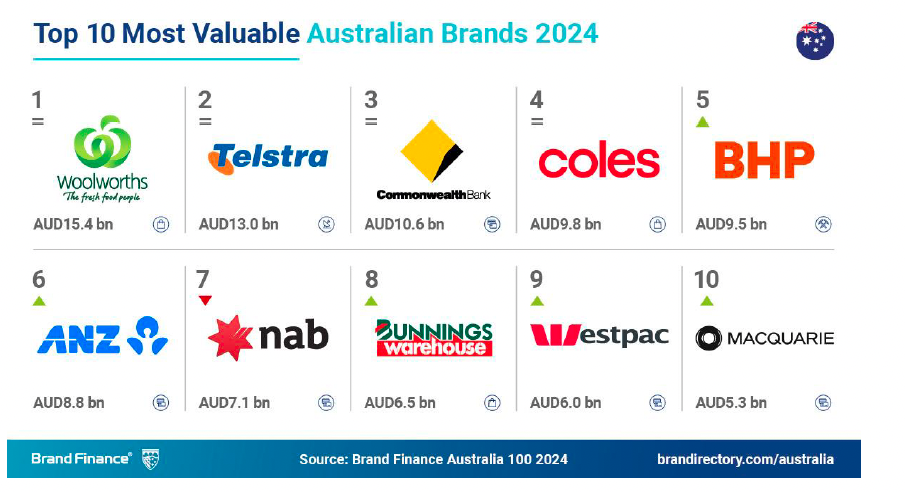Bin it to win it: TerraCycle boss unpacks how recycling drives customer acquisition, higher footfall, bigger baskets for Walmart, BiC, Big W – trick is aligning KPIs to P&L

What you need to know:
- Waste management and recycling and reuse efforts are coming under greater scrutiny locally and globally. The latest of these is the Australian Packaging Covenant Organisation (APCO) 2030 Strategy, created in consultation with state and federal governments, which is expected to see end-of-life packing processing costs charged to brands, manufacturers and retailers unless they already have an end-of-life option in place – such as recycling, reuse and composting.
- But it’s the carrot of brand and sales value over the stick of regulatory reform that TerraCycle CEO and founder, Tom Szaky, is hoping to entice marketers with.
- The organisation is working with more than 650 brand teams globally to achieve a business return on investment for their investments in providing recycling services, looking at the brand and customer value these programs provide as the reason to lean in. In Szaky’s words, the approach is about “seducing the capital, if you will” by building a shopper marketing strategy for brands.
- An example of how Terracycle has helped a brand do this is Walmart US and car seat recycling. Half of all consumers returning these items were net new customers to the retailer.
- Per Szaky: “One of the nice things about recycling programs is they can also do what normal marketing programs cannot. Could Royal Canin just put big posters up in a veterinary surgery? Not at all. Could BIC do it at schools? That wouldn’t be appropriate. But these are really interesting ways to create engagement, not just around recycling, but in many cases, what happens to the waste.”
Purpose may have become the proverbial baby in the bathwater for brand managers, and an ASIC greenwashing penalty the latest fear for the compliance department, but that doesn’t mean sustainability lacks value for marketers who can realise its true business worth.
That’s the view of TerraCycle founder and CEO, Tom Szaky, who caught up with Mi3 recently to talk about how brands it’s partnering with around the world on recycling and waste management programs are yielding strong returns via more opportunities for customer acquisition, retention, advocacy and cut through. Increasingly, the circular economy advocate and entrepreneur is urging businesses to see the carrot rather than the stick when it comes to waste management and recycling and reuse solutions. He’s also spied a unique role for marketing leaders to be the ones to realise this value.
US-based TerraCycle is a 22-year-old business operating across 20 countries globally including top five location, Australia, and has either a for-profit or not-for-profit approach to tackling the waste crisis depending on the level of wealth existing in that market. Because as Szaky points out, the circular economy and successful recycling all boils down to “what the money flow is”. If it’s more expensive to pick up and process something than the raw material value coming out of it, then you have a problem.
“What makes something recyclable is simply this: Can the garbage company at the end make money? Why we have a big fast fashion problem is because clothing is becoming lower quality and lower quality means lower value – meaning it doesn’t get reused. It all end up boiling down to money flow,” he says.
Closer to home, this reality was made stark via the recently released Australian Packaging Covenant Organisation (APCO) 2030 Strategy, created in consultation with state and federal governments. The latest report came after a damming 2022 review showed Australian industry was lagging on targets put in place to reduce packaging waste. The report showed not only is it costing more to recycle many packaged materials than the market price of the recycled material, there is also a lack of collection systems for some materials (think soft packaging stockpiling by REDCycle) as well as sufficient reprocessing infrastructure and markets to cope with all the material even if it is collected.
As a result, local industry is well short of the 2025 targets of seeing 100 per cent of packaging used being reusable, recyclable or compostable (now sitting at 84 per cent); 70 per cent of plastic packaging being recycled or composed (at 20 per cent); 50 per cent of content across packaging being recycled (at 40 per cent); and phasing out single-use plastic packaging.
Under the 2030 Strategy, there are plans afoot to see end-of-life packing processing costs charged to brands, manufacturers and retailers unless they already have an end-of-life option in place – such as recycling, reuse and composting. The Covenant applies to businesses in the supply chain with more than $5 million in total annual turnover. It’s estimated the annual cost to achieve a recycling rate for plastic packaging of 55 per cent in 2030 is $247 million, while recycling an extra 500,000 tonnes of paper and cardboard would cost $59 million annually.
So that’s the stick. The good news is Szaky rates Australian businesses generally as “above average” in their willingness to lean in from a business context compared to other markets worldwide, and also says local consumers are generally caring and participatory. Yet with Australia facing stricter targets – and charges – for industry to encourage better packaging waste management, more clearly needs to be done.
If you're a CMO at an organisation, I would look at where your sustainability department rolls into, and what is their function. Because there may be a lot of sustainability activities you can then take on. Everyone can work on sustainability in their various roles. But I think marketers have the biggest opportunity to do that, because they can shift the voice of the brand, the voice of the product, what it stands for. They probably have more impact on the sustainability direction of the organisation than even sustainability officers themselves.
Seducing the capital by finding brand and customer value
Globally, TerraCycle works with over 650 major brands to provide consumer-facing recycling solutions. In all, about 500,000 doors have some form of recycling bin from the company for everything from nappies to pet food bags, blister packs, pens, soft plastics and cosmetics.
According to Szaky, the focus is on working with marketing and brand teams to achieve return on investment for their investment in providing recycling services. He labels it “seducing the capital, if you will” by building a shopper marketing strategy.
“I’ve never had a situation where the company is not aware of the waste, whether they’re a retailer or a brand. The real question is it’s going to require funding to be able to set up recycling programs. Then it’s about teasing out how can the funding of recycling drive value,” Szaky says. “Because if you don’t have that idea of value, then the program can exist but it becomes more symbolic. But if you can really home that idea of value for the marketer, that will allow them to accomplish the things they’re focused on, and the companies are going to say, how do we make this the absolute, most massive opportunity possible. That’s what we want to do; scale-up recycling programs. When we’ve nailed that proposition, companies really lean in over a long period of time and we can get up to collecting.”
Triple value play
Szaky puts the value recycling programs produce in three buckets. The first is their sustainability value. “The irony is the essence of why we exist is to do that,” he says. “This is also the least measurable on a P&L; it doesn’t really show up, right? The best way to connect it to a P&L would be more long-term risk.”
The second ‘value’ is brand building. This could come in the form of earned media or many other brand-building related elements. “This value is more measurable, but there’s a little fuzziness, because not everyone is going to prescribe the same value to an article, social media post or influencer,” continues Szaky.
The third and arguably most demonstrable value is customer-based, exhibited through KPIs like footfall, incrementality and growth. “That sales value is the most measurable on a P&L,” he says.
“As a recycling company, if I look at the 500 employees we have, about one-third are dedicated to those two other points of value [brand and customer]: How do we drive really good wins at retail, and how do we drive really good wins at the brand level? Because if you do that right, then the brand really leans in and it becomes a really positive, self-fulfilling system.”
Customer acquisition impact
An example of how TerraCycle has helped a brand do this is Walmart US and car seat recycling. Within two days, the retailer received 10 per cent of what it sells in a year back for recycling across 4,000 stores – 8.5 million pounds worth, or the equivalent of more than 1,500 truckloads of car seats. Associated marketing, PR and social campaigning generated 2 billion media impressions.
“What is the real driver for them to fund this? Fifty per cent of the people dropping off a car seat are not Walmart consumers,” says Szaky. “You can see how exciting that is for the retailer.”
In Australia, TerraCycle has worked with stationery manufacturer, BiC, on a free writing instrument recycling program across schools plus offices – the two biggest stakeholders for its products.
“Usually there isn’t that direct brand connection – it’s kids just bringing their writing instruments to school and that’s it. Now, there are these beautiful collection boxes in all these schools and offices,” says Szaky.
BiC has gone on to provide prize packs of pens and markers, designing bespoke pen licences for the winning schools to use. The winners were selected from 15 new schools that signed up to its recycling program, who collected the most waste.
Another local example is Glad sandwich bags, which has been running for 10 years and is doing “a phenomenal job, especially with schools,” according to Szaky. TerraCycle also worked on the original toy recycling program with Big W, resulting in a sharp increase in foot traffic and strong community engagement, with recycled playgrounds made from the waste donated to schools.
“It’s the same with Royal Canin, which has done a very good job with key stakeholders that are a very difficult one to market to: Veterinarians,” he says. “These examples have been ways for those marketing teams to create much deeper engagement with their big stakeholders.
“One of the nice things about recycling programs is they can also do what normal marketing programs cannot. Could Royal Canin just put big posters up in a veterinary surgery? Not at all. Could BiC do it at schools? That wouldn’t be appropriate. But these are really interesting ways to create engagement, not just around recycling, but in many cases, what happens to the waste. Does it turn into something that can then be donated back to that location, whether it’s a dog park, or veterinary surgery, or playground or school?”
Frequency and basket booster
Overall, TerraCycle claims its retailer programs in aggregate in the US, France, Canada and Australia have resulted in 70 per cent of customers shopping more often, 31 per cent showing more willingness to spend more per trip, and a 78 per cent recycling repeat rate
Scale is coming through these partnerships as a consequence. In Canada, coffee capsule recycling programs collect back 30 per cent of what the country consumers, while in the UK, 15 per cent of blister packs for medication or pills is collected. “These programs become really massive when that relationship between cost and value is really honed,” Szaky says.
What these programs additionally do is bring the concept of sustainability back to down to an individual activity we all grew up learning: Waste management. “It’s the first lesson we learn as children… kids at elementary school learn to reduce, reuse, recycle, which is a garbage lesson,” comments Szaky. “It’s not a climate change lesson.
“When you ask consumers, what is the first thing they would think about doing, it’s what they do with the things in their lives – can they recycle them? Do I have to dispose of them? If there’s a pen recycling choice here, you can actually do something. If it’s about climate change, you would hope that company has done its part, but these things become further removed from the consumer. Waste is a very easy, tangible, physical thing everyone understands.”
Finding the sustainability business KPI
In ascertaining where the value lies for each organisation, Szaky recommends looking at where sustainability reports into.
“In Mars, it reports into the chief procurement officer; in Kraft Heinz, it reports into the general counsel; sometimes it’s the CFO, or head of communication,” he says. “If it reports into legal, it means it’s a risk to be managed. If it reports into procurement, it means it’s a cost to be managed. If it reports into communications, then it’s a comms issue. It’s almost never to marketing. But what’s ironic is it’s almost always marketing who is the owner of these programs”
More broadly, where sustainability focus has shifted over the last 20 years is to compliance handling and reporting – think ESG or more recently, Scope 1, 2 or 3 emissions requirements.
“It’s good it’s there, but there’s a lot of opportunity for sustainability to do much more than be in a compliance role,” Szaky says.
“This is where I think marketing can pick up some of that weight. If you’re a CMO at an organisation, I would look at where your sustainability department roll into, and what is their function. Because there may be a lot of sustainability activities you can then take on. Everyone can work on sustainability in their various roles. But I think marketers have the biggest opportunity to do that, because they can shift the voice of the brand, the voice of the product, what it stands for. They probably have more impact on the sustainability direction of the organisation than even sustainability officers themselves.”
It’s for all these reasons Szaky is so keen to encourage brands to seek value out, versus waving the sustainability stick. He’s of course supportive of regulatory action too – mandatory and voluntary action are not mutually exclusive, he says, and it’s clear the pressure is on in Australia – but he’s also adamant marketers can get proactive about this in a way that delivers value to the business.
“Everyone at their core wants to do the right thing. It’s just how do you do that in the context of your business KPIs. That’s been the secret sauce,” Szaky adds.





